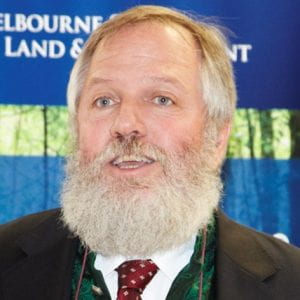Home page
Welcome to the Home page of the Forest Molecular Biology and Genetics (FMBG) research team, part of the School of Ecosystem and Forest Sciences (SEFS) within the Faculty of Science at the University of Melbourne.
Our research is directed at investigations into the molecular control of meristem differentiation and pattern formation with specific emphasis on the differentiation of the vascular cambium, the regulation of wood formation and wood quality determination in forest trees.
At a whole tree level, we use molecular, genetics and genomics approaches to uncover causal links between gene structure and function and their relevance for patterning genetic diversity in natural (native forests) and artificial (breeding populations) ecosystems with respect to physical and physiological attributes also in relation to biotic and abiotic stress tolerance.
Academic Staff
Postgraduate Research Students
FMBG alumni
Dr Wilson TL Yong
Dr Hossein Valipour Kahrood
Dr Agnieszka Wujeska-Klause
Dr Helen Waite
Dr Peng Zhu
Dr Saravanan Thavamanikumar
Emma Melder
Dr Lynette Taylor
Debby Beugelsdijk
Dr Paul G Nevill
Dr Tiphaine Després
Dr Alastair Reed
Dr Nahida Bhuiyan
Dr Josquin FG Tibbits
Myriam Tonkin
Dr Luke J McManus
Associate Professor Andrew Merchant
Dr Eny Faridah
Dr Lawrie Wilson
Kim S Van Beveren
Dr Qing Wang
Associate Professor Mathew A Leitch
Genome-wide determination of Puccinia psidii s.l. rust resistance in eucalypts (ARC-Linkage Project LP130100458)
Gerd Bossinger, Peter K Ades, Antanas V Spokevicius, Josquin FG Tibbits (DEDJTR – AgriBio), Wilson TL Yong, Fatima A Runa, Paul WJ Taylor (FVAS), Richard Kerr (STBA), Philippe Rigault (Gydle Inc), Karanjeet Sandhu (USyd), Brad M Potts (UTas)
This project represents a major collaborative effort led by UM’s FMBG team with support and significant intellectual input from the Southern Tree Breeding Association (STBA); Hancock Victorian Plantations (HVP); VicForests; Australian Bluegum Plantations Pty Ltd (ABP); the Victorian Government Department of Economic Development Jobs Transport and Resources (DEDJTR) through AgriBio; the NSW Government Department of Trade & Investment Regional Infrastructure and Services (DTIRIS) through its Biosecurity Research Division; Gydle Inc (Canada); the University of Sydney and the University of Tasmania.
Native to South-eastern Australia, Eucalyptus globulus is the main eucalypt grown in pulpwood plantations in temperate regions worldwide. In this project, large progeny screenings of E. globulus have been conducted for myrtle rust (Austropuccinia psidii) resistance including germplasm from wild trees across the native range and selections from breeding programs. In total some 14,000 E. globulus plants (from over 2,000 seedlots) were screened, in addition to some 2,000 plants (from over 900 native seedlots) of E. obliqua, another economically important eucalypt species. To our knowledge, this represents the largest screening for myrtle rust in any plant species to date. The screened material was used (i) to study the infection process and disease cycle of Austropuccinia psidii, (ii) to uncover geographical patterns of variation in susceptibility of E. globulus and E. obliqua to myrtle rust disease; and (iii) to conduct genome wide association studies of myrtle rust resistance in E. obliqua and E. globulus, the latter with special focus on the Australian deployment and breeding collections (see below).
Phenotypic variation of myrtle rust resistance in Eucalyptus globulus (sub-project of LP130100458)
Fatima A Runa, Gerd Bossinger, Peter K Ades, Josquin FG Tibbits (DEDJTR – AgriBio), Wilson TL Yong, Karanjeet S Sandhu (USyd)
Myrtle rust disease, caused by the fungal pathogen Austropuccinia psidii s.l. has a wide host range within Myrtaceae and poses a significant threat to Myrtaceae-rich ecosystems and Myrtaceae-based industries around the world. In this project, we provide a detailed characterisation of E. globulus resistance to A. psidii and estimate genetic parameters based on the largest progeny screening for myrtle rust resistance in any plant species to date. In total we screened 6935 E. globulus plants from 444 seedlots representing an almost complete survey of the Australian deployment and breeding collections. We investigate possible genetic mechanisms for resistance and explore options for the incorporation of myrtle rust resistance traits into current breeding programs.
Identification of transcriptome changes in response to water deficit in different species of Eucalyptus with contrasting drought sensitivity
Mojtaba K Raad, Andrew Merchant (USyd), Josquin FG Tibbits (DEDJTR – AgriBio), Gerd Bossinger, Antanas V Spokevicius
Changes in global climate have been a major driver for evolution. In plants, stresses related to lack or excess of water, light and heat, combined or in isolation, required individuals and populations to develop different physiological, morphological and molecular mechanisms to survive and flourish. Australian plants like eucalypts have evolved in response to climate change during different geographical periods and increasing length and intensity of drought in different parts of Australia led to a series of adaptations. Aiming to better understand adaptation mechanisms, this project analyses changes in gene expression patterns and metabolite profiles in a diverse range of eucalypt species from different geographic locations, from mesic and xeric backgrounds, in response to different water stress conditions. Our results are hoped to inform sustainable forest management and support breeding efforts and deployment practices.
Functional investigations into transcription factors behind wood formation
Nadeeshani Karannagoda, Steven Hussey (University of Pretoria), Antanas Spokevicius, Gerd Bossinger
Xylogenesis is a continuous and dynamic differentiation process of cambial cell division, differentiation, xylem cell expansion, secondary cell wall (SCW) deposition and programmed cell death. All these stages are transcriptionally regulated by an underlying network of transcription factors (TFs). This project uses transgenic Eucalyptus grandis x camaldulensis hybrid and Populus alba somatic xylem tissue sectors to functionally characterise a number of selected Eucalyptus grandis transcription factors that have not previously been investigated for their role in wood formation. Observed changes in wood cell morphology and biochemistry will shed light on the transcriptional network regulating SCW deposition in economically and ecologically important woody tree species.
Tubulin roles in determining cellulose microfibril angle during wood formation
Larissa Machado Tobias, Heather McFarlane (University of Toronto), Antanas Spokevicius, Gerd Bossinger
In commercially grown woody tree species, the orientation of cellulose microfibrils within the secondary cell wall (microfibril angle – MFA) is an important wood quality determinant and a major domestication trait. MFA varies along the plant’s developmental gradients and in reaction wood is formed in response to gravitational stress. Tubulin genes, encoding the primary components of microtubules, are known to be differentially expressed in reaction wood and to affect the MFA of xylem fibres. This project investigates how tubulin proteins participate in MFA determination by providing a visual assessment of microtubule organisation and orientation in fixed cells of xylem excised from reaction, opposite and normal wood from branches and induced systems in eucalypt, poplar and radiata pine. Results are expected to shed light on the role played by tubulin genes in orientating cellulose microfibrils during the deposition of secondary cell walls in woody trees.
Unveiling the molecular control of bifacial cambium development in trees
Sachinthani Karunarathne, Antanas Spokevicius, John Golz (BioSciences), Gerd Bossinger
In contrast to animals with predetermined growth patterns, plant growth is continuous and iterative producing new organs and structures from actively dividing meristems. In woody tree species, one such meristem is the bifacial vascular cambium which continuously produces phloem or bark towards the outside of the trunk and xylem or wood towards the inside. How is this continuity re-established after the cambium itself has been wounded or partially destroyed? What are the mechanisms that enable trees to maintain or re-establish secondary vascular tissue (SVT)? In this project we use wound response as a tool to investigate molecular level controls of cambium re-establishment and regeneration of SVT patterns. Genes and hormones known to interact in the differentiation of xylem, phloem and cambium domains in different woody tree species are being assessed for their respective roles in cambium regeneration upon wounding. Results will provide insights into the molecular control of radial pattern formation in newly establishing cambia adding to our rapidly expanding knowledge about vascular proliferation processes also in established cambia.
Published and in press:
- Yong, W.T.L., Ades, P.K., Runa, F.A., Bossinger, G., Sandhu, K.S., Potts, B.M. and J.F.G. Tibbits (2021). Genome wide association study of myrtle rust (Austropuccinia psidii) resistance in Eucalyptus obliqua (subgenus Eucalyptus). Tree Genetics and Genomes, 17:31. https://doi.org/10.1007/s11295-021-01511-0
- Karannagoda, N., Spokevicius, A., Hussey, S. and G. Bossinger (2020). Microanalytical techniques for phenotyping secondary xylem. IAWA Journal, 41:356-389. https://doi.org/10.1163/22941932-bja10034
- Tobias, L.M., Spokevicius, A.V., McFarlane, H.E. and G. Bossinger (2020). The Cytoskeleton and Its role in secondary cell wall formation in woody tree species. Plants, 9:90. https://doi.org/10.3390/plants9010090
2019
- Yong, W.T.L., Ades, P.K., Goodger, J.Q.D., Bossinger, G., Runa, F.A., Sandhu, K.S. and J.F.G. Tibbits (2019). Using essential oil composition to discriminate between myrtle rust phenotypes in Eucalyptus. Industrial Crops and Products, 140:111595. https://doi.org/10.1016/j.indcrop.2019.111595.
- Ruvini, V.L., Scott, J.B., Ades, P.K. and P.W.J. Taylor (2019). Population structure of Colletotrichum tanaceti in Australian pyrethrum reveals high evolutionary potential. Phytopathology. https://apsjournals-apsnet-org.ezp.lib.unimelb.edu.au/doi/10.1094/PHYTO-03-19-0091-R
- Ruvini, V.L., Korhonen, P.K., Young, N.D., Scott, J.B., Ades, P.K., Gasser, R.B. and P.W.J. Taylor (2019). Comparative genome analysis indicates high evolutionary potential of pathogenicity genes in Colletotrichum tanaceti. PLOS1. https://journals.plos.org/plosone/article?id=10.1371/journal.pone.0212248
- Yong, W.T.L., Ades, P.K., Bossinger, G., Runa, F.A., Sandhu, K.S., Potts, B.M. and J.F.G. Tibbits (2019). Geographical patterns of variation in susceptibility of Eucalyptus globulus and Eucalyptus obliqua to myrtle rust disease. Tree Genetics and Genomes, 15:31. https://doi.org/10.1007/s11295-019-1338-5
- De Silva, D.D., Groenewald, J.Z. Crous, P.W., Ades, P.K., Nasruddin, A., Mongkolporn, O. and P.J.W. Taylor (2019). Identification, prevalence and pathogenicity of Colletotrichum species causing anthracnose of Capsicum in Asia. IMA Fungus, 10:1. https://doi.org/10.1186/s43008-019-0001-y.
- Callaghan, S.E., Burgess, L.W., Ades, P.K., Mann, E., Morrison, A., Tesoriero, L.A. and P.W.J. Taylor (2019). Identification and pathogenicity of Pythium species associated with poor growth of tomato plants in the Australian Processing Tomato Industry. Acta Horticulturae, https://doi-org.ezp.lib.unimelb.edu.au/10.17660/ActaHortic.2019.1233.21
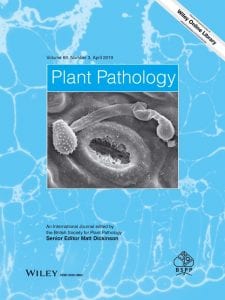 Yong, W.T.L., Ades, P.K., Tibbits, J.F.G., Bossinger, G., Runa, F.A., Sandhu, K.S. and P.W.J. Taylor (2019). Disease cycle of Austropuccinia psidiion Eucalyptus globulus and Eucalyptus obliqua leaves of different rust response phenotypes. Plant Pathology, 68:547-556. http://dx.doi.org/10.1111/ppa.12959
Yong, W.T.L., Ades, P.K., Tibbits, J.F.G., Bossinger, G., Runa, F.A., Sandhu, K.S. and P.W.J. Taylor (2019). Disease cycle of Austropuccinia psidiion Eucalyptus globulus and Eucalyptus obliqua leaves of different rust response phenotypes. Plant Pathology, 68:547-556. http://dx.doi.org/10.1111/ppa.12959
2018
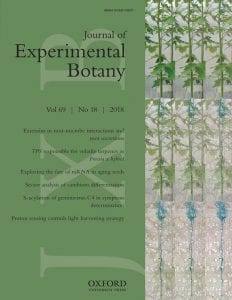 Bossinger, G. and A.V. Spokevicius (2018). Sector analysis reveals patterns of cambium differentiation in poplar stems. Journal of Experimental Botany, 69:4339-4348. https://doi.org/10.1093/jxb/ery230 (…highlighted in: Ramos, A.C. and S. Regan (2018). Cell differentiation in the vascular cambium: new tool, 120-year debate. Journal of Experimental Botany, 69:4231-4233. https://doi.org/10.1093/jxb/ery285)
Bossinger, G. and A.V. Spokevicius (2018). Sector analysis reveals patterns of cambium differentiation in poplar stems. Journal of Experimental Botany, 69:4339-4348. https://doi.org/10.1093/jxb/ery230 (…highlighted in: Ramos, A.C. and S. Regan (2018). Cell differentiation in the vascular cambium: new tool, 120-year debate. Journal of Experimental Botany, 69:4231-4233. https://doi.org/10.1093/jxb/ery285)- Bossinger, G. and A.V. Spokevicius (2018). All the forests in the world from a single layer of cells. PURSUIT – Science matters. https://pursuit.unimelb.edu.au/articles/all-the-forests-in-the-world-from-a-single-layer-of-cells; 2 July 2018.
- Bossinger, G. and A.V. Spokevicius (2018). Secondary growth and wood development. Chapter 7.2 in: Plants in Action (R. Munns, S. Schmidt and C. Beveridge eds), http://plantsinaction.science.uq.edu.au, The Australian and New Zealand Societies of Plant Sciences.
- Spokevicius, A.V. and G. Bossinger (2018). How gene effects on wood formation can be studied in forest tree species. Case Study 7.2 in: Plants in Action (R. Munns, S. Schmidt and C. Beveridge eds), http://plantsinaction.science.uq.edu.au, The Australian and New Zealand Societies of Plant Sciences.
- Schuster, T.M., Setaro, S.D., Tibbits, J.F.G., Batty, E.L., Fowler, R.M., Mclay, T.G.B., Wilcox, S., Ades, P.K. and M.J. Bayly (2018). Chloroplast variation is incongruent with classification of the Australian bloodwood eucalypts (genus Corymbia, family Myrtaceae). PLOS 1. https://doi.org/10.1371/journal.pone.0195034
- Moslemi, A., Ades, P.K., Crous, P., Nicolas, M.E. and P.J.W. Taylor (2018). Influence of waterlogging on growth of pyrethrum plants infected by crown and root rot pathogens – Fusarium oxysporum, Fusarium avenaceum and Paraphoma vinacea. Australasian Plant Pathology, 47:205-213. https://doi.org/10.1007/s13313-018-0547-y
- Moslemi, A., Ades, P.K., Crous, P., Groom, T., Scott, J., Nicolas, M.E. and P.W.J. Taylor (2018). Paraphoma chlamydocopiosa sp. nov. and Paraphoma pye sp. nov., two new species associated with leaf and crown infection of pyrethrum. Plant Pathology, 67:124-135. https://doi.org/10.1111/ppa.12719
2017
- De Silva, D.D., Crous, P.W., Ades, P.K., Hyde, K.D. and P.W.J. Taylor (2017). Life styles of Colletotrichum species and implications for plant biosecurity. Fungal Biology Reviews, 31:155-168. https://doi.org/10.1016/j.fbr.2017.05.001
- Moslemi, A., Ades, P.K., Groom, T., Crous, P., Nicolas, M.E. and P.W.J. Taylor (2017). Fusarium oxysporum and Fusarium avenaceum associated with yield-decline of pyrethrum in Australia. European J Plant Pathology, 149:43-56. https://doi.org/10.1007/s10658-017-1161-5
- Moslemi, A., Ades, P., Groom, T., Nicolas, M. and P. Taylor (2017). Alternaria infectoria and Stemphylium herbarum, two new pathogens of pyrethrum (Tanacetum cinerariifolium) in northern Tasmania. Australasian Plant Pathology, 46:91-101. https://doi-org.ezp.lib.unimelb.edu.au/10.1007/s13313-016-0463-y
- De Silva, D.D., Ades, P.K., Crous, P.W. and P.W.J. Taylor (2017). Colletotrichum species associated with chili anthracnose in Australia. Plant Pathology, 66:254-267. https://doi.org/10.1111/ppa.12572
2016
- Spokevicius, A., Taylor, L., Melder, E., Van Beveren, K., Tibbits, J., Creux, N. and G. Bossinger (2016). The use of induced somatic sector analysis (ISSA) for studying genes and promoters involved in wood formation and secondary stem development. Vis. Exp.(116), e54553, https://doi.org/10.3791/54553
- Wujeska-Klause A., Bossinger G. and M. Tausz (2016). The concentration of ascorbic acid and glutathione in thirteen provenances of Acacia melanoxylon.Tree Physiology, 36:524-532. https://doi.org/10.1093/treephys/tpw008
- Moslemi, A., Ades, P., Groom, T., Nicolas, M. and P. Taylor (2016). Paraphoma crown rot of pyrethrum (Tanacetum cinerariifolium). Plant Disease, 100:2363-2368. https://doi.org/10.1094/PDIS-05-16-0628-RE
- Mesgaran, M.B., Lewis, M.A., Ades, P.K., Donohue, K., Ohadi, S., Li, C.J and R.D. Cousens (2016). Hybridization can facilitate species invasions, even without enhancing local adaptation. PNAS, 113:10210–10214. https://doi.org/10.1073/pnas.1605626113
- Ohadi, S., Ades, P.K., Ford, R., Strand, A.E., Tibbits, J., Mesgaran, M.B. and R.D.A. Cousens (2016). Genetic structure along the strandline: unravelling invasion history in a one-dimensional system. Journal of Biogeography, 43:541-560. https://doi.org/10.1111/jbi.12640
2015
- Wujeska-Klause A., Bossinger G. and M. Tausz (2015). Responses to heatwaves of gas exchange, chlorophyll fluorescence and antioxidants ascorbic acid and glutathione in congeneric pairs of Acaciaand Eucalyptus species from relatively cooler and warmer climates. Trees – Structure and Function, 29:1929-1941. https://doi.org/10.1007/s00468-015-1274-4
- Melder, E., Bossinger, G. and A. Spokevicius (2015). ARBORKNOX1 delays the differentiation of induced somatic sector analysis (ISSA) derived xylem fibre cells in poplar stems. Tree Genetics and Genomes, 11:87. https://doi.org/10.1007/s11295-015-0912-8
- Kazana, V., Tsourgiannis, L., Iakovoglou, V., Stamatiou, C., Alexandrov, A., Araújo, S., Bogdan, S., Bozic, G., Brus, R., Bossinger, G., Boutsimea, A., Ćelepirović, N., Cvrčková, H., Fladung, M., Ivanković, M., Kazaklis, A., Koutsona, P., Luthar, Z., Máchová, P., Malá, J., Mara, K., Mataruga, M., Moravcikova, J., Paffetti, D., Paiva, J.A.P., Raptis, D., Sanchez, C., Sharry, S., Salaj, T., Šijačić-Nikolić, M., Tel-Zur, N., Tsvetkov, I., Vettori, C. and N. Vidal (2015). Public knowledge and perceptions of safety issues towards the use of genetically modified forest trees: A cross-country pilot survey. p. 223-244, In: Vettori, C., Fladung, M., Häggman, H., Pilate, G., Gallardo, F., Kazana, V. and F. Migliacci (eds), Biosafety of Forest Transgenic Trees – Improving the Scientific Basis for Safe Tree Development and Implementation of EU Policy Directives, Springer Berlin, Heidelberg, New York. https://doi.org/10.1007/978-94-017-7531-1_12
- Kazana, V., Tsourgiannis, L., Iakovoglou, V., Stamatiou, C., Alexandrov, A., Araújo, S., Bogdan, S., Bozic, G., Brus, R., Bossinger, G., Boutsimea, A., Ćelepirović, N., Cvrčková, H., Fladung, M., Ivanković, M., Kazaklis, A., Koutsona, P., Luthar, Z., Máchová, P., Malá, J., Mara, K., Mataruga, M., Moravcikova, J., Paffetti, D., Paiva, J.A.P., Raptis, D., Sanchez, C., Sharry, S., Salaj, T., Šijačić-Nikolić, M., Tel-Zur, N., Tsvetkov, I., Vettori, C. and N. Vidal (2015). Public attitudes towards the use of transgenic forest trees: A cross-country pilot survey. Iforest-Biogeosciences and Forestry, 9:344-353. https://doi.org/10.3832/ifor1441-008
- Baldacci-Cresp, F., Moussawi, J., Leplé, J.-C., Van Acker, R., Kohler, A., Candiracci, J., Twyffels, L., Spokevicius, A.V., Bossinger, G., Laurans, F., Brunel, N., Vermeersch, M., Boerjan, W., El Jaziri, M. and M. Baucher (2015). PtaRHE1, a Populous tremulax alba RING-H2 protein of the ATL family, has a regulatory role in secondary phloem development. The Plant Journal, 82:978-90. https://doi.org/10.1111/tpj.12867
- Wujeska, A., Bossinger, G. and M. Tausz (2015). Seedlings of two Acaciaspecies from contrasting habitats show different photoprotective and antioxidative responses to drought and heatwaves. Annals of Forest Science, 72:403-414. https://doi.org/10.1007/s13595-014-0438-5
- MacMillan C.P., Taylor, L., Bi, Y.D., Southerton, S.G., Evans R. and A. Spokevicius (2015). The fasciclin-like arabinogalactan protein family of Eucalyptus grandis contains members that impact wood biology and biomechanics. New Phytologist, 206:1314-1327. https://doi.org/10.1111/nph.13320
- Vaghefi, N., Ades, P.K., Pethybridge, S.J. and P.W.J. Taylor (2015). Draft genome sequence of Stagonosporopsis tanaceti. IMA Fungus, 6: 231–246.
- Vaghefi, N., Hay, F., Ades, P.K., Pethybridge, S.J., Ford, R. and P.W.J. Taylor (2015). Rapid changes in the genetic composition of Stagonosporopsis tanaceti population in Australian pyrethrum fields. Phytopathology, 105:358-369. https://doi-org.ezp.lib.unimelb.edu.au/10.1094/PHYTO-08-14-0212-R
- Vaghefi, N., Ades, P.K., Hay, F.S., Pethybridge, S.J., Ford, R. and P.W.J. Taylor (2015). Identification of the MAT1 locus in Stagonosporopsis tanaceti, and exploring its potential for sexual reproduction in Australian pyrethrum fields. Fungal Biology, 119:408-419. https://doi.org/10.1016/j.funbio.2014.04.004
2014
- Thavamanikumar, S., Thumma, B.R., Southerton, S.G. and G. Bossinger (2014). Association studies in Eucalyptus. In: Genetics, Genomics and Breeding of Eucalypts (R. Henry and C. Kole eds), p.45-57, Science Publishers, Inc., Enfield, NH and CRC Press (Taylor and Francis), Boca Raton, FL.
- Thavamanikumar, S., McManus, L.J., Ades, P.K. , Bossinger, G., Stackpole, D.J., Kerr, R., Hadjigol, S., Freeman, J.S., Vaillancourt, R.E., Zhu, P. and J.F.G. Tibbits (2014). Association mapping for wood quality and growth traits in Eucalyptus globulusglobulus Labill. identifies nine stable marker-trait associations for seven traits. Tree Genetics and Genomes, 10:1661-1678. https://doi.org/10.1007/s11295-014-0787-0
- Myburg, A.A., Grattapaglia, D., Tuskan G.A., Hellsten U., Hayes R,D., Grimwood J., Jenkins J., Lindquist E., Tice H., Bauer D., Goodstein D.M., Dubchak I., Poliakov A., Mizrachi, E., Kullan, A.R.K., Hussey S.G., Pinard D., Van der Merwe K., Singh P., Van Jaarsveld I., Silva O.B., Togawa R.C., Pappas M.R., Faria D.A., Sansaloni C.P., Petroli, C.D., Yang X.H., Ranjan P., Tschaplinski T.J., Ye C.Y., Li T., Sterck L., Vanneste K., Murat F., Soler M., Clemente H.S., Saidi N., Cassan-Wang H., Dunand C., Hefer CA., Bornberg-Bauer E., Kersting, A.R., Amarasinghe V., Ranik M., Naithani S., Elser J., Boyd, A.E., Liston A., Spatafora J.W., Dharmwardhana P., Raja R., Sullivan, C., Romanel E., Alves-Ferreira M., Lheim C.K., Foley W., Carocha V., Paiva J., Kudrna D., Brommonschenkel S.H., Pasquali G., Byrne M., Rigault P., Tibbits J., Spokevicius A., Jones R.C., Steane D.A., Vaillancourt R.E., Potts B.M., Joubert F., Barry K., Pappas, G.J., Strauss, S.H., Jaiswal P., Grima-Pettenati J., Salse J., Van de Peer, Y., Rokhsar, D.S. and J. Schmutz (2014). The Genome of Eucalyptus grandis, Nature, 510(7505):356. https://doi.org/10.1038/nature13308
- Nevill, P.G., Despres, T., Bayly, M.J., Bossinger, G. and P.K. Ades (2014). Shared phylogeographic patterns and widespread chloroplast haplotype sharing in Eucalyptus species with different ecological tolerances. Tree Genetics and Genomes, 10:1079-1092. https://doi.org/10.1007/s11295-014-0744-y
- Powell, C.J., Ades, P., Collett, N. and C. Phillips (2014). Epigaeic beetle communities of the Green Triangle plantation landscape, southern Australia: effect of remnant size, vegetation quality and structural complexity. Australian Forestry, 76:128-139. https://doi.org/10.1080/00049158.2013.844090
2013
- Wujeska, A., Bossinger, G. and M. Tausz (2013). Responses of foliar antioxidative and photoprotective defence systems of trees to drought – a meta-analysis. Tree Physiology, 33:1018-1029. https://doi.org/10.1093/treephys/tpt083
- Bayly, M.J., Rigault, P., Spokevicius, A.V., Ladiges, P.Y., Ades, P.K., Anderson, C., Bossinger, G., Merchant, A., Udovicic, F., Woodrow, I.E. and J.F.G. Tibbits (2013). Chloroplast genome analysis of Australian eucalypts – Eucalyptus, Corymbia, Angophora, Allosyncarpia and Stockwellia (Myrtaceae). Molecular Phylogenetics and Evolution, 69:704-16. https://doi.org/10.1016/j.ympev.2013.07.006
- Waite, H., May, P. and G. Bossinger (2013). Variations in phytosanitary and other management practices in Australian grapevine nurseries. Phytopathologia Mediterranea, 52:369−379. http://dx.doi.org/10.14601/Phytopathol_Mediterr-10667
- Thavamanikumar, S., Southerton, S.G., Bossinger, G. and B.R. Thumma (2013). Dissection of complex traits in forest trees — opportunities for marker-assisted selection. Tree Genetics and Genomes, 9:627-639. https://doi.org/10.1007/s11295-013-0594-z
- Creux, N.M., Bossinger, G., Myburg, A.A. and A.V. Spokevicius (2013). Induced somatic sector analysis of cellulose synthase (CesA) promoter regions in woody stem tissues. Planta, 237:799-812. https://doi.org/10.1007/s00425-012-1792-x
Some older publications:
- Creux, N.M., M. Ranik, M., M.H. De Castro, M.H., Spokevicius, A., Bossinger, G., Maritz-Olivier, C. and A.A. Myburg (2012). Understanding the transcriptional regulation of the Eucalyptus cellulose synthase1 gene. South African Journal of Botany, 79:182.
- Hussey, S.G., Mizrachi, E., Spokevicius, A.V., Bossinger, G., Berger, D.K and A.A. Myburg (2012). SND2, a NAC transcription factor gene, regulates genes involved in secondary cell wall development in Arabidopsis fibres and increases fibre cell area in Eucalyptus. BMC Plant Biology, 2011, 11:173 http://www.biomedcentral.com/1471-2273.
- Bossinger, G. and A.V. Spokevicius (2011). Plant Chimaeras and Mosaics. In: Encyclopedia of Life Sciences. John Wiley & Sons, Ltd., Chichester, https://doi.org/10.1002/9780470015902.a0002090.pub2
- Thavamanikumar, S., McManus, L. J. Tibbits, J. F. G. and G. Bossinger (2011). The significance of single nucleotide polymorphisms (SNPs) in Eucalyptus globulus breeding programs. Australian Forestry, 74:23-29. https://doi.org/10.1080/00049158.2011.10676342
- Nevill, P.G., Bossinger, G. and P.K. Ades (2010). Phylogeography of the world’s tallest angiosperm Eucalyptus regnans: Evidence for multiple isolated Quaternary refugia. Journal of Biogeography, 37: 179-192. https://doi.org/10.1111/j.1365-2699.2009.02193.x
- Bossinger, G. (2009). Segments (phytomers) (version 2.0). In: Encyclopedia of Life Sciences. John Wiley & Sons, Ltd., Chichester, https://doi.org/10.1002/9780470015902.a0002093.pub2
- Nevill, P.G., Reed, A., Bossinger, G., Vaillancourt, R.E., Larcombe, M. and P.K. Ades (2008). Cross species amplification of Eucalyptus microsatellite loci. Molecular Ecology Resources, 8:1277-1280. https://doi.org/10.1111/j.1755-0998.2008.02362.x
- Bossinger, G., Tibbits, J.F.G., McManus, L.J. and A.V. Spokevicius (2007). Molecular tree domestication and the xylogenesis candidate gene cascade. pp. 69-84, In: The Compromised Wood Workshop 2007(Entwistle, K., Harris, P. and Walker, J. eds), The Wood Technology Research Centre, University of Canterbury, New Zealand.
- Teulières, C., Bossinger, G., Moran, G., and C. Marque (2007). Stress Studies in Eucalyptus. Plant Stress, 1:197-215. http://www.globalsciencebooks.info/Online/GSBOnline/images/0712/PS_1(2)/PS_1(2)197-215o.pdf
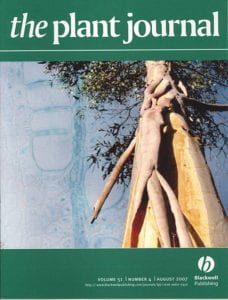 Spokevicius, A.V., Southerton, S., MacMillan, C.P., Qiu, D., Gan, S., Tibbits, J.F.G., Moran, G.F. and G. Bossinger (2007). Beta-tubulin affects cellulose microfibril orientation in plant secondary fibre cell walls. The Plant Journal, 51:717-726. https://doi.org/10.1111/j.1365-313X.2007.03176.x
Spokevicius, A.V., Southerton, S., MacMillan, C.P., Qiu, D., Gan, S., Tibbits, J.F.G., Moran, G.F. and G. Bossinger (2007). Beta-tubulin affects cellulose microfibril orientation in plant secondary fibre cell walls. The Plant Journal, 51:717-726. https://doi.org/10.1111/j.1365-313X.2007.03176.x- Spokevicius, A.V., Tibbits, J.F.G. and G. Bossinger (2007). Whole plant and plant part transgenic approaches in the study of wood formation – benefits and limitations. Transgenic Plant Journal, 1:49-59. http://www.globalsciencebooks.info/Online/GSBOnline/images/0706/TPJ_1(1)/TPJ_1(1)49-59o.pdf
- McManus, L.J., Blomstedt, C.K, Sasse, J. and G. Bossinger (2007). The effects of ethyl methanesulfonate (EMS) treatment on Eucalyptuspollen behaviour in vitro. Trees – Structure and Function, 21:379-383. https://doi.org/10.1007/s00468-007-0137-z
- Van Beveren, K.S., Spokevicius, A.V., Tibbits, J., Wang, Q. and G. Bossinger (2006). Transformation of cambial tissue in vivo provides an efficient means for induced somatic sector analysis and gene testing in stems of woody plant species. Functional Plant Biology, 33:629-638. https://doi.org/10.1071/FP06057
- Tibbits, J.F.G., McManus, L.J., Spokevicius, A.V. and G. Bossinger (2006). A rapid method for tissue collection and high throughput genomic DNA isolation from mature trees. Plant Molecular Biology Reporter, 24:81-91. https://doi.org/10.1007/BF02914048
- McManus, L.J., Sasse, J., Blomstedt, C.K. and G. Bossinger (2006). Pollen treatment for mutation induction in Eucalyptus globulus globulus (Myrtaceae). Australian Journal of Botany, 54:65-71. https://doi.org/10.1071/BT05094
- Spokevicius, A.V., Van Beveren, K.S. and G. Bossinger (2006). Agrobacterium-mediated transformation of dormant lateral buds in poplar trees reveals developmental patterns in secondary stem tissues. Functional Plant Biology, 33:133-139. https://doi.org/10.1071/FP05176
- Wilson, L., Tonkin, M. and G. Bossinger (2005). Transpiration-assisted perfusion fixation provides in situ preservation of developing ray parenchyma cells in Eucalyptus nitens. Journal of Microscopy, 220:113-119. https://doi.org/10.1111/j.1365-2818.2005.01524.x
- Spokevicius, A.V., Van Beveren, K., Leitch, M.A. and G. Bossinger (2005). Agrobacterium-mediated in vitro transformation of wood-producing stem segments in eucalypts. Plant Cell Reports, 23:617-624. https://doi.org/10.1007/s00299-004-0856-1
- Leitch, M.A. and G. Bossinger (2004). In vitro systems for the study of wood formation. Chapter 8, p. 193-211; In: Molecular Genetics and Breeding of Forest Trees. Kumar, S. and M. Fladung eds, The Haworth Press, Inc, NY.
- Wilson, L., Tonkin, M. and G. Bossinger (2004). The Xylem Xapper: A device for preparation of powdered xylem from stems of forest trees for molecular biological investigations. Plant Molecular Biology Reporter, 22:427-434. https://doi.org/10.1007/BF02772685
- Bossinger, G. (2002). Plant Chimeras and Mosaics. In: Encyclopedia of Life Sciences, vol. 14, pp. 387-391. London: NATURE Publishing Group. https://doi.org/10.1038/npg.els.0002090
- Bossinger, G. (2001). Segments (phytomers). In: Encyclopedia of Life Sciences,vol. 17, pp. 61-64. London: NATURE Publishing Group. https://doi.org/10.1038/npg.els.0002093
- Bossinger, G. and M.A. Leitch (2000). Isolation of cambium-specific genes from Eucalyptus globulus In: Cell & Molecular Biology of Wood Formation (R. Savidge, J.Barnett and R.Napier eds), p. 203-207, BIOS Scientific, Oxford.
- Pozzi, C., Faccioli, P., Terzi, V., Stanca, A.M., Cereoli, S., Castiglioni, P., Fink, R., Capone, R., Müller, K.J., Bossinger, G., Rohde, W. and F. Salamini (2000). Genetics of mutations affecting the development of a barley floral bract. Genetics, 154:1335-1346. http://www.genetics.org/content/154/3/1335
…and some very early gems:
- Bossinger, G. (1997). Genes controlling cambium and fibre differentiation. Appita Journal, Journal of the Technical Association of the Australian and New Zealand Pulp and Paper Industry Inc., 50(1):76.
- Bossinger, G. and D.R. Smyth (1996). Initiation patterns of flower and floral organ development in Arabidopsis thaliana. Development, 122:1093-1102. http://dev.biologists.org/content/122/4/1093
- Bennett, S., Alvarez, J., Bossinger, G. and D.R. Smyth (1995). Morphogenesis in pinoid mutants of Arabidopsis thaliana. The Plant Journal, 8:505-520. https://doi.org/10.1046/j.1365-313X.1995.8040505.x
- Bowman, J.L., Smyth, D.R., Hill, J.P., Lord, E.M., Craig, S., Chaudhary, A., Davis, A.R., Koorneef, M., Okada, K., Shimura, Y., Alvarez, J., Bossinger, G., Weigel, D., Meyerowitz, E.M., Clark, S.E., Sakai, H. and W. Crone (1994). Flowers. Chapter 3 in Arabidopsis: An Atlas of Morphology and Development. J.L. Bowman ed., p. 133-273, Springer-Verlag, New York.
- Alvarez, J., Bossinger, G. and D.R. Smyth (1994). The PINOID In: Arabidopsis: An Atlas of Morphology and Development. J. Bowman ed., p. 184-187, Springer-Verlag, New York.
- Castagna, R., Borghi, B., Bossinger, G. and F. Salamini (1993). Induction and characterization of Triticum monococcum mutants affecting plant and ear morphology. Journal of Genetics and Breeding, 47:127-138.
- Bossinger, G., U. Lundqvist, W. Rohde and F. Salamini (1992). Genetics of plant development in barley. In: Barley Genetics VI Vol. II, p. 989-1022, Proceedings of the Sixth International Barley Genetics Symposium, L. Munck ed., Munksgaard Int. Pub. Ltd., Copenhagen, Denmark.
- Bossinger, G., W. Rohde, U. Lundqvist and F. Salamini (1992). Genetics of barley development: Mutant phenotypes and molecular aspects. p. 229-261; In: Barley: Genetics, Biochemistry, Molecular Biology and Biotechnology. P. R. Shewry ed., CAB International, Long Ashton, UK.
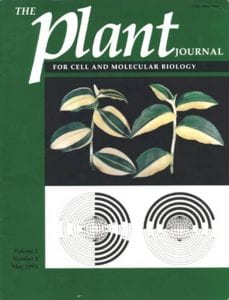 Bossinger, G., Maddaloni, M., Motto, M. and F. Salamini (1992). Formation and cell lineage patterns of the shoot apex of maize. The Plant Journal, 2:311-320. https://doi.org/10.1111/j.1365-313X.1992.00311.x
Bossinger, G., Maddaloni, M., Motto, M. and F. Salamini (1992). Formation and cell lineage patterns of the shoot apex of maize. The Plant Journal, 2:311-320. https://doi.org/10.1111/j.1365-313X.1992.00311.x- Fladung, M., Bossinger, G., Roeb, G.W. and F. Salamini (1991). Correlated alterations in leaf and flower morphology and rate of leaf photosynthesis in a midribless (mbl) mutant of Panicum maximum. Planta, 184:356-361. https://doi.org/10.1007/BF00195337
- Maddaloni, M., Bossinger, G., DiFonzo, N., Motto, M., Salamini, F. and A. Bianchi (1990). Unstable alleles of the Glossy-1 locus of maize show a light-dependent variation in the pattern of somatic reversion. Maydica, 35:409-420.
PhD opportunity in Plant Reproductive Biology at the University of Melbourne
Help to unravel the biology of pinecone development and seed production to help grow a renewable future with Australia’s number 1 University and Australia’s key forest growers and tree improvement organisations HVP Plantations, Forico, Tree Breeding Australia and SeedEnergy.
Why?
In Australia, the softwood plantation estate amounts to 52% of the national plantation area and consists of 74% by area of Pinus radiata. These renewable and sustainably managed softwood plantations are important for carbon sequestration while providing more than 85% of Australia’s total sawlog timber for housing and other needs!
In P. radiata, genetic improvement and economical deployment relies on the establishment of seed orchards, seed production via open or controlled pollination, and efficient mass production of improved seedlings from superior clones.
Efficiency of seed production in pines is often affected by “conelet drop” where cone’s fail to fully mature and therefore fail to develop mature seeds. However, despite the economic importance of P. radiata, and reports of conelet drop as high as 50% over the past decades, the reason behind this phenomenon are still relatively unclear.
The Research Project
Joining leading researchers and industry professionals from some of Australia biggest tree growers and genetic improvement organisations, this project aims to firstly understand the extent of the problem in Australian seed orchards and then conduct a thorough assessment of developmental and potentially physiological and/or molecular processes leading to ‘conelet drop’ to increase seed production.
In achieving this, the successful candidate will work closely with industry staff and researchers to draw on years of data already collected from existing seed orchards as well as establishing new trails in orchards located in Victoria, Tasmania and South Australia to explore new avenues of research.
If you are into reproductive biology, working in a large team of dedicated professionals, enjoy the outdoors and would like to contribute to solving a significant problem facing a ‘green’ industry, then this could be the project for you!
How do I apply
This project is conditional on student meeting course entry requirements and receiving a full Graduate Research Scholarship which provides a stipend and tuition fee offset. Information on this can be found HERE and please do not apply until encouraged to do so (see below).
Research related costs, including for field travel and accommodation, field equipment, lab consumables, IT or other equipment or services as agreed will be covered by the project budget.
Applicants are asked to complete an expression of interest which requires them to submit a current CV, relevant academic transcripts, and a short response to the following questions so that this can be assessed by the selection panel.
- Why are you motivated to pursue a PhD in this specific field?
- Describe what knowledge, skills, and/or competencies you will bring with you to support such a project.
- Describe your key research experiences that relate to this project. What did you investigate and what did you find?
- What is your understanding of the softwood plantation industry and the importance of pinecone development and seed production in tree improvement efforts?
The expression of interest is to be emailed to Dr Antanas Spokevicius at avjs@unimelb.edu.au by the due date noted in the key dates section below with the email Subject listed as ‘Expression of interest for PhD opportunity in Plant Reproductive Biology’.
A panel comprising project partners will then shortlist applicants and meet with them for a short interview. When successful, the candidate will be asked by the panel to apply for a Doctor of Philosophy – Science and request a scholarship following the instructions provided on HERE
Note: Scholarships are very competitive, and the selection panel will make an assessment on the competitiveness of the candidate based on scholarship selection criteria.
Key dates
- Applicants will be asked to complete the survey and submit CV and academic transcripts by 1st August 2022 for review by selection panel. Applicants may have coursework still to be completed at this time.
- The successful applicant will be notified by 31st August 2022 and be encouraged to complete the application process through the University of Melbourne by the 30th September 2022.
- The first round of scholarship offers will be made by the 20th December 2022 and if successful, applicants may commence their PhD studies anytime between 1st Jan and 30th June 2023. If applicants are not selected in the first round, but were ranked highly, they will be automatically considered for a second round scholarship offer which will be announced in April 2023, with commencement of study occurring anytime between 1st July and 31st December 2023.
Further Questions?
If you have any further queries or questions, please contact Dr Antanas Spokevicius at avjs@unimelb.edu.au or 0428 079 113
__________________________________________________________________________________________________
PURSUIT – Science matters
All the forests in the world from a single layer of cells.
https://pursuit.unimelb.edu.au/articles/all-the-forests-in-the-world-from-a-single-layer-of-cells
Professor Gerd Bossinger
The University of Melbourne – Faculty of Science
School of Ecosystem and Forest Sciences
Water Street, Creswick, Victoria 3363, Australia
